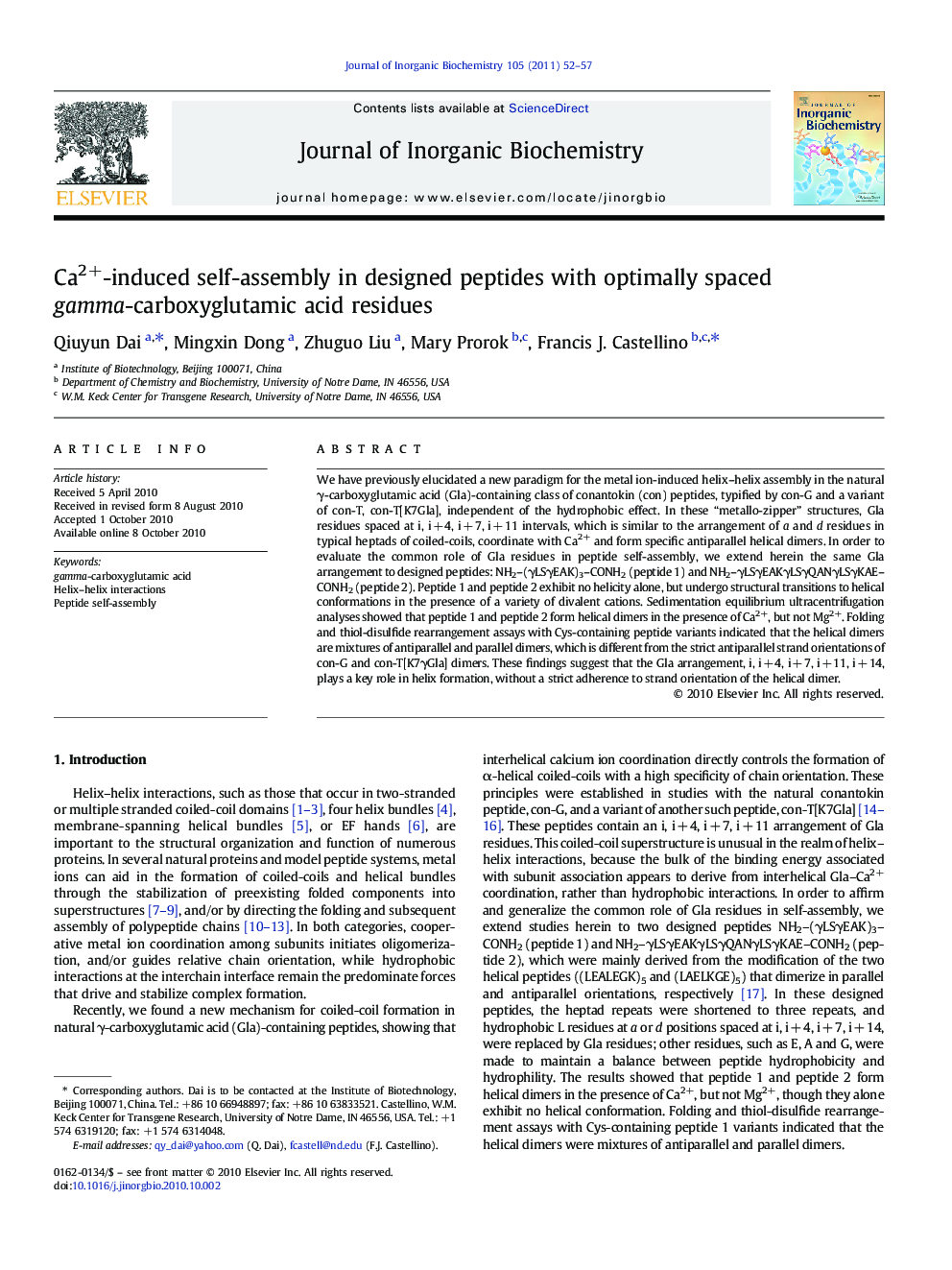| کد مقاله | کد نشریه | سال انتشار | مقاله انگلیسی | نسخه تمام متن |
|---|---|---|---|---|
| 1316326 | 976448 | 2011 | 6 صفحه PDF | دانلود رایگان |

We have previously elucidated a new paradigm for the metal ion-induced helix–helix assembly in the natural γ-carboxyglutamic acid (Gla)-containing class of conantokin (con) peptides, typified by con-G and a variant of con-T, con-T[K7Gla], independent of the hydrophobic effect. In these “metallo-zipper” structures, Gla residues spaced at i, i + 4, i + 7, i + 11 intervals, which is similar to the arrangement of a and d residues in typical heptads of coiled-coils, coordinate with Ca2+ and form specific antiparallel helical dimers. In order to evaluate the common role of Gla residues in peptide self-assembly, we extend herein the same Gla arrangement to designed peptides: NH2–(γLSγEAK)3–CONH2 (peptide 1) and NH2–γLSγEAKγLSγQANγLSγKAE–CONH2 (peptide 2). Peptide 1 and peptide 2 exhibit no helicity alone, but undergo structural transitions to helical conformations in the presence of a variety of divalent cations. Sedimentation equilibrium ultracentrifugation analyses showed that peptide 1 and peptide 2 form helical dimers in the presence of Ca2+, but not Mg2+. Folding and thiol-disulfide rearrangement assays with Cys-containing peptide variants indicated that the helical dimers are mixtures of antiparallel and parallel dimers, which is different from the strict antiparallel strand orientations of con-G and con-T[K7γGla] dimers. These findings suggest that the Gla arrangement, i, i + 4, i + 7, i + 11, i + 14, plays a key role in helix formation, without a strict adherence to strand orientation of the helical dimer.
Graphical AbstractA designed γ-carboxyglutamic acid (Gla)-containing peptide forms a helical dimer in the presence of calcium ions, but not Mg2+, Zn2+, Mn2+. The deriving force stems from the appropriate balance of interchain and intrachain metal ion coordination by optimally spaced Gla residues.Figure optionsDownload as PowerPoint slide
Journal: Journal of Inorganic Biochemistry - Volume 105, Issue 1, January 2011, Pages 52–57